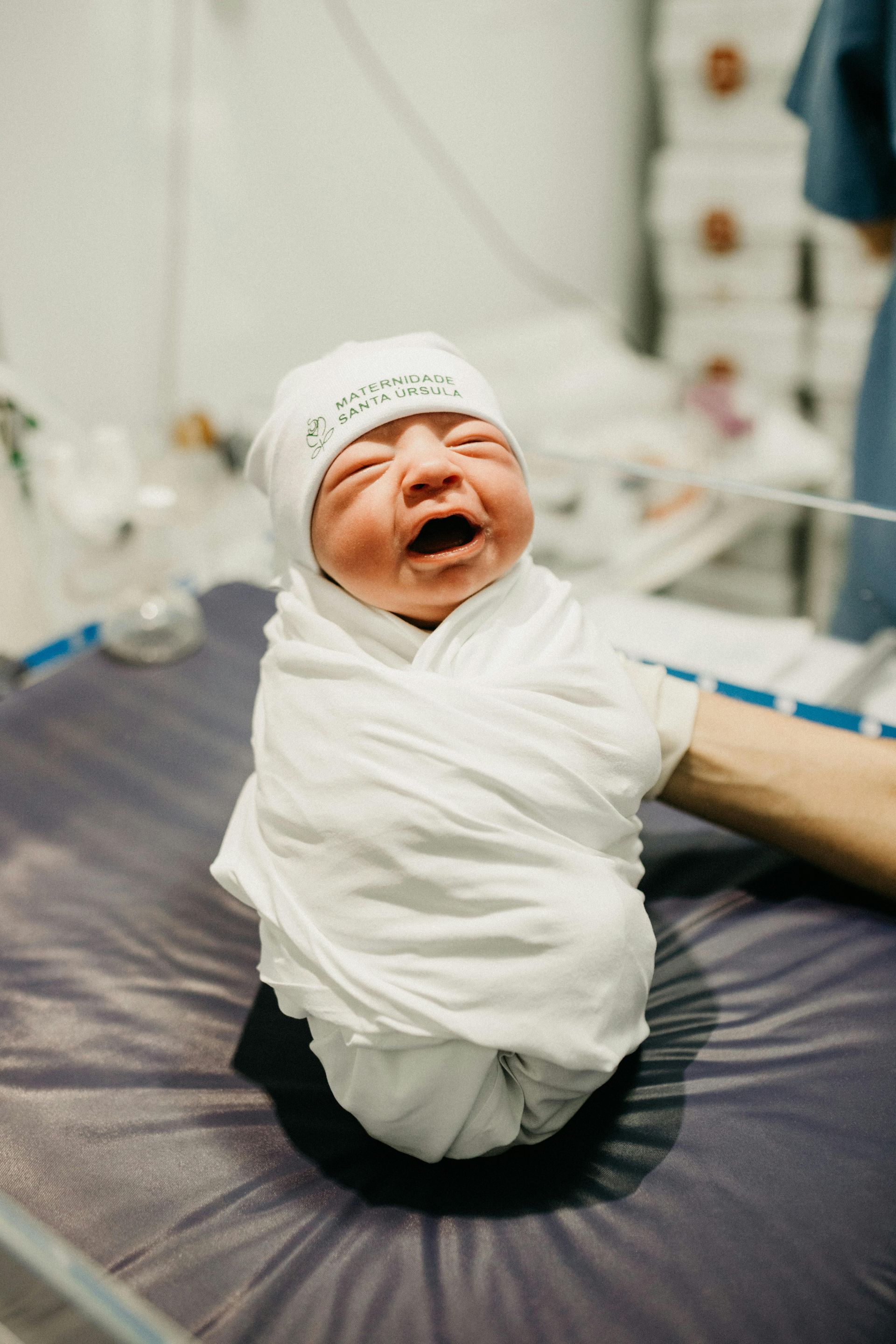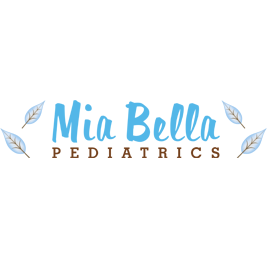Alternative Birthing Options Policy
Alternative Birthing Options, including Birth Centers and Home Births Policy
At Mia Bella Pediatrics, we embrace FAMILY-CENTERED CARE, and strive to work TOGETHER as a team with our families to provide skilled and compassionate care that not only meets but exceeds the pediatric standard of care. In doing so, we respect each family’s innate strengths, view the health care experience as an opportunity to build on these strengths, and support families in their care-giving and decision-making roles. We apply this approach in ALL situations, including care for our newborns in multiple birth settings. This could include not only the delivery of the newborn by an Obstetrician within the traditional hospital setting, but also midwifery care by a Certified Nurse Midwife (CNM) for birth in a hospital setting, an in-hospital Birth Center, or a freestanding Birth Center. Mia Bella Pediatrics has established long-standing, working relationships with multiple CNMs than now span over 15 years, and believes excellent care can best be achieved through continuing efforts by all participating health care providers to develop and sustain communications and understanding on the basis of professional interaction and mutual respect. Here are links to the Certified Nurse Midwives with which we work closely:
Allison Molinski, MSN, RN, CNM
Lisa Sherwood, MSN, CNM, WHCNP
Denise G Castellanos, CNM
Julie M Vivalda, CNM

As per the guidelines from both the American Academy of Pediatrics (AAP) and the American College of Obstetricians and Gynecologists (ACOG), hospitals and birthing centers are the safest settings for birth in the United States. In addition, both AAP and ACOG support provision of care only by midwives who are certified by the American Midwifery Certification Board (Certified Nurse Midwives).
Lastly, as we support our families in their decision-making roles for the care of their newborns, we also embrace our role as child advocates and believe every newborn infant deserves health care that adheres to the standards as set forth by the American Academy of Pediatrics, as detailed in their Guidelines for Perinatal Care (1) and Policy Statement on Home Birth (3), outlined below:
Care of the newborn infant immediately after delivery should adhere to standards of practice as described in Guidelines for Perinatal Care (1). Subsequent newborn care should also adhere to these AAP standards, as well as to the AAP statement regarding Care of the Well Newborn Infant (2). A few practice points are worthy of specific mention:
- Transitional care (first 4–8 hours): The infant should be kept warm and undergo a detailed physical examination that includes an assessment of gestational age and intrauterine growth status (weight, length, and head circumference), as well as a comprehensive risk assessment for neonatal conditions that require additional monitoring or intervention. Temperature, heart and respiratory rates, skin color, peripheral circulation, respiration, level of consciousness, tone, and activity should be monitored and recorded at least once every 30 minutes until the newborn’s condition is considered normal and has remained stable for 2 hours. An infant who is thought to be <37 weeks’ gestational age should be transferred to a medical facility for continuing observation for conditions associated with prematurity, including respiratory distress, poor feeding, hypoglycemia, and hyperbilirubinemia, as well as for a car safety seat study.
- Monitoring for group B streptococcal disease: As recommended by the Centers for Disease Control and Prevention and the AAP, all pregnant women should be screened for group B streptococcal (GBS) colonization at 35 to 37 weeks of gestation.Women who are colonized should receive ≥4 hours of intravenous penicillin, ampicillin, or cefazolin (There are no good studies or evidence that alternate therapies such as topical Hibiclens for GBS is effective, and is NOT a recommendation per the CDC or AAP for prevention of neonatal GBS). If the mother has received this intrapartum treatment and both she and her newborn infant remain asymptomatic, they can remain at a free-standing Birth Center if the infant can be observed frequently by an experienced and knowledgeable health care provider. If the mother shows signs of chorioamnionitis or if the infant does not appear completely well, the infant should be transferred rapidly to a medical facility for additional evaluation and treatment.
- Glucose screening: Infants who have abnormal fetal growth (estimated to be small or large for gestational age) or whose mothers have diabetes should be delivered in a hospital or birthing center because of the increased risk of hypoglycemia and other neonatal complications. If, after delivery, an infant is discovered to be small or large for gestational age or has required resuscitation, he or she should be screened for hypoglycemia as outlined in the AAP statement. If hypoglycemia is identified and persists after feeding (glucose <45 mg/dL), the infant should be transferred promptly to a medical facility for continuing evaluation and treatment.
- Eye prophylaxis: Every newborn infant should receive prophylaxis against gonococcal ophthalmia neonatorum.
- Vitamin K: Every newborn infant should receive a single parenteral (injection) dose of natural vitamin K1 oxide (phytonadione [0.5–1 mg]) to prevent vitamin K–dependent hemorrhagic disease of the newborn.Oral administration of vitamin K has NOT been shown to be effective for the prevention of late hemorrhagic disease. This dose should be administered shortly after birth but may be delayed until after the first breastfeeding.
- Hepatitis B vaccination: Early hepatitis B immunization is recommended for all medically stable infants with a birth weight >2 kg.
- Assessment of feeding: Breastfeeding, including observation of position, latch, and milk transfer, should be evaluated by a trained caregiver. The mother should be encouraged to record the time and duration of each feeding, as well as urine and stool output, during the early days of breastfeeding.
- Screening for hyperbilirubinemia: Infants whose mothers are Rh negative should have cord blood sent for a Coombs direct antibody test; if the mother’s blood type is O, the cord blood may be tested for the infant’s blood type and direct antibody test, but it is not required provided that there is appropriate surveillance, risk assessment, and follow-up. All newborn infants should be assessed for risk of hyperbilirubinemia and undergo bilirubin screening between 24 and 48 hours. The bilirubin value should be plotted on the hour-specific nomogram to determine the risk of severe hyperbilirubinemia and the need for repeat determinations.
- Universal newborn screening: Every newborn infant should undergo universal newborn screening in accordance with individual state mandates, with the first blood specimen ideally collected between 24 and 48 hours of age.
- Hearing screening: The newborn infant’s initial caregiver should ensure that the hearing of any infant born outside the hospital setting is screened by 1 month of age, in accordance with AAP recommendations.
- Provision of follow-up care: Comprehensive documentation and communication with the follow-up provider are essential. Written records should describe prenatal care, delivery, and immediate postnatal course, clearly documenting which screenings and medications have been provided by the birth attendant, and which remain to be performed. All newborn infants should be evaluated by a health care professional who is knowledgeable and experienced in pediatrics within 24 hours of birth and subsequently within 48 hours of that first evaluation. The initial follow-up visit should include infant weight and physical examination, especially for jaundice and hydration. If the mother is breastfeeding, the visit should include evaluation of any maternal history of breast problems (eg, pain or engorgement), infant elimination patterns, and a formal observed evaluation of breastfeeding, including position, latch, and milk transfer. The results of maternal and neonatal laboratory tests should be reviewed; clinically indicated tests, such as serum bilirubin, should be performed; and screening tests should be completed in accordance with state regulations. Screening for congenital heart disease should be performed by using oxygen saturation testing as recommended by the AAP.
- American Academy of Pediatrics; American College of Obstetricians and Gynecologists. Care of the newborn. Kilpatrick SJ, Papile L-A, Macones, GA, eds.Guidelines for Perinatal Care and Neonatal complications and management of high-risk infants. 8th ed. Elk Grove Village, IL: American Academy of Pediatrics; 2017.
- American Academy of Pediatrics Committee on Fetus and Newborn. Hospital stay for healthy term newborns.Pediatrics. 2015;135(5):948-953.
- American Academy of Pediatrics Committee of Fetus and Newborn. Planned Home Birth.Pediatrics. 2013;131(5):1016-1020.

